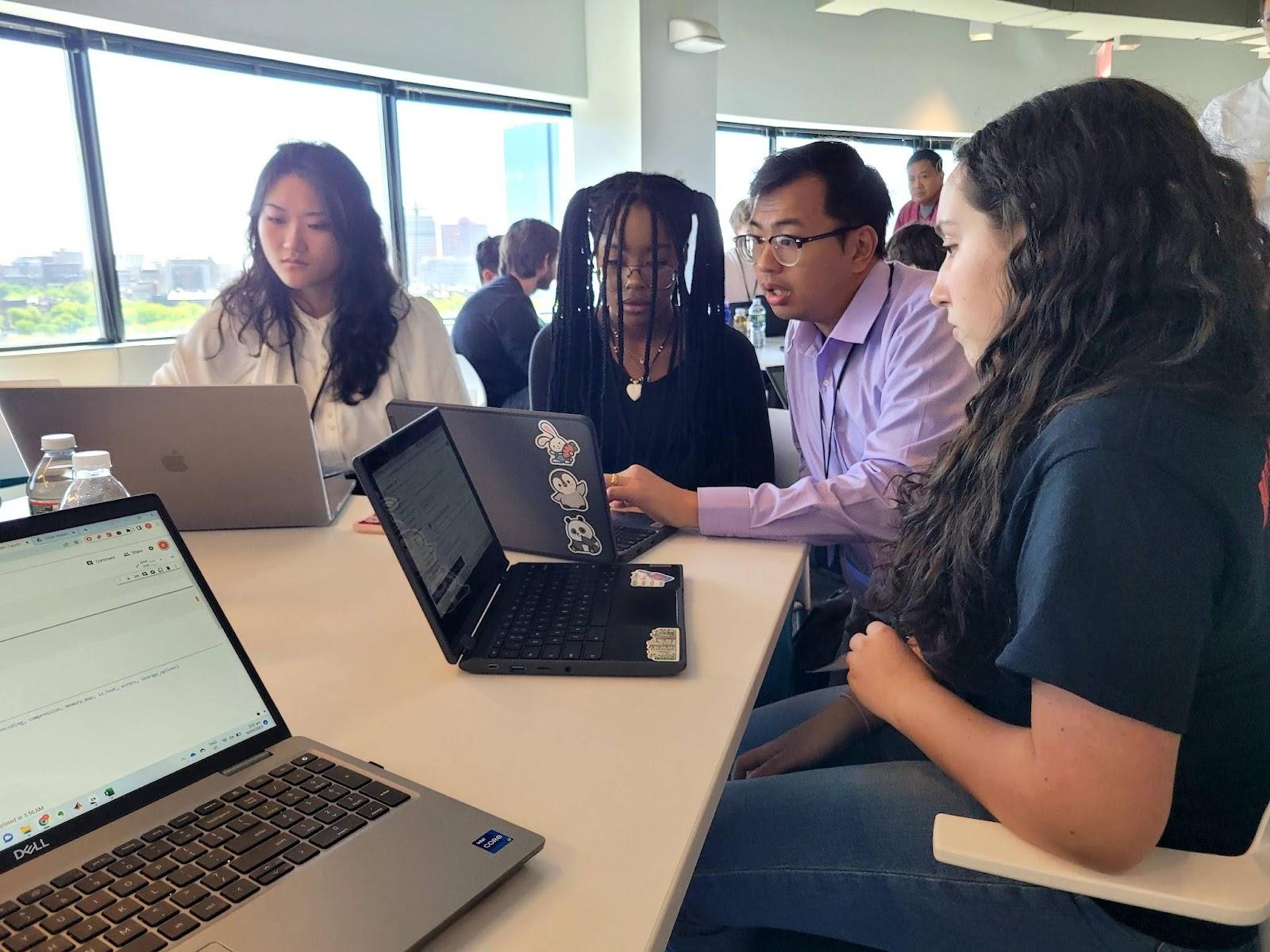Narrative Modeling with StoryQ
Importance
Artificial intelligence (AI) is reshaping society, and AI will almost certainly be among the most dominant factors in the coming decades. While not every student needs to become an AI scientist or engineer, almost everyone will enter a workforce powered and transformed by AI technologies. Preparing youth to enter and engage with an AI-filled future is one of our most critical challenges.
The StoryQ team—with learning technology and data experts from the Concord Consortium, machine learning experts from Carnegie Mellon University, and experts in the integration of narrative modeling and mathematics learning from North Carolina State University—is helping students envision their future careers as powered by AI.
Using AI and literacy-based approaches, StoryQ is creating inclusive learning experiences and preparing diverse youth for the future. We’re using existing opportunities to bridge critical gaps in AI education. Focusing on narrative modeling, one of the oldest fields in artificial intelligence, StoryQ combines standard-based mathematics, language arts, and computing concepts, and synthesizes them into a coherent learning experience that renders formidable topics like machine learning and artificial intelligence amicably within reach. By approaching the topic through creative writing, students will bring forward their cultural and personal knowledge resources and claim ownership of stories about their personal identities while deepening their understanding of AI themes.
Research
We are partnering with two school districts in Massachusetts with ethnically and economically diverse populations and researching the following questions:
- How can learning environments be designed to help students understand core AI concepts including the structures in unstructured data and the roles of human insight in the development of AI technologies?
- How can learning environments be designed to help students develop awareness and interest in careers that are centered on text mining practices or broadly powered by AI technologies?
Publications
- Horton, N. J., Chao, J., Palmer, P., & Finzer, W. (2023). How learners produce data from text in classifying clickbait. Teaching Statistics.
- Chao, J. (2022). Exploring artificial intelligence with StoryQ. @Concord, 26(1), 4–6.
- Horton, N. J., Chao, J., Finzer, W., & Palmer, P. (2022). Spam four ways: Making sense of text data. CHANCE, 35(2), 32–40.
- Culbreth, D., & Chao, J. (2021). The bardic bot: Integrating AI and ELA education via poetic meter. @Concord, 25(2), 8–9.
Blog Posts
Learn more about the Narrative Modeling with StoryQ project at the Concord Consortium blog.
- Broadening the Scope of English Class into Artificial Intelligence
- Why Artificial Intelligence Belongs in English Class







